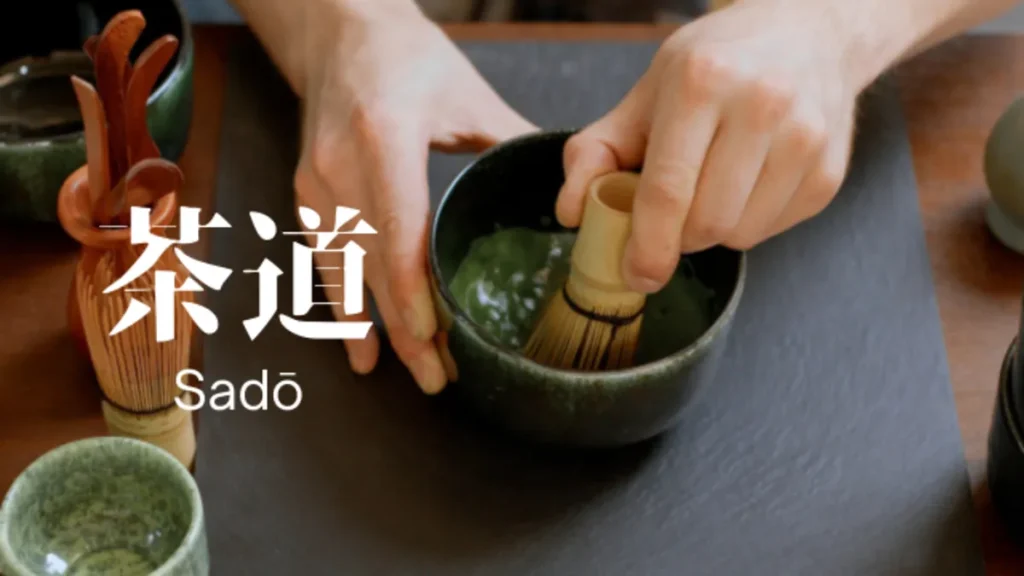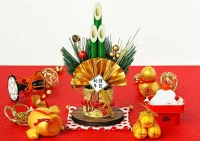An in-depth look at the appeal of the tea ceremony! Basic knowledge you need to know from history to culture

The tea ceremony sounds interesting, but what's the attraction?"
I'd like to know more about the history and etiquette of the tea ceremony."
This article is perfect for foreigners who have such questions. The tea ceremony is not only a tea ceremony, but also a special time to experience the heart and culture of Japan.
■What this article will tell you
1. a brief history and culture of the tea ceremony
2. learn the basic manners and etiquette of the tea ceremony
3. understand the key points to enjoy the tea ceremony
This article will give you a deeper understanding of the joy of the tea ceremony and Japanese culture, and make you feel more familiar with the tea ceremony. Please read to the end!
What is the Tea Ceremony? Its Essence and Universal Value

The tea ceremony is a Japanese tradition that goes beyond the mere art of brewing tea and has a deeply spiritual and sensitive cultural background. Through its practice, this culture offers contemplation and spiritual enrichment to its participants.
Basic Definition and Cultural Meaning of the Tea Ceremony
The tea ceremony is based on the spirit of "ichiki ichikai. This translates to "once-in-a-lifetime encounter," and includes the teaching that every encounter should be cherished and that each moment should be lived with care.
The tea ceremony expresses this philosophy in a tangible form, providing a place to find tranquility and peace away from everyday life by putting one's heart and soul into each action in the tea room.
Understanding Japanese culture through tea ceremony
The tea ceremony is one of the cultural activities that epitomize Japanese aesthetics and philosophy. In Japanese culture, which places great importance on the changing of the seasons, different utensils and flowers are chosen for each season in tea ceremonies. This allows visitors to directly experience the beauty of Japan's four seasons and the culture's emphasis on harmony with nature.
The tea ceremony also teaches politeness and respect for others, which are closely related to the ethics of Japanese society as a whole.
Because of these elements, the tea ceremony is more than just a ritual for enjoying tea; it serves as a place for people to connect with each other and seek spiritual peace. It is an important means of learning not only about superficial beauty, but also about deep spirituality and Japanese cultural values.
When did the tea ceremony begin? Historical Background

The tea ceremony, whose history and origins can be traced back to ancient China, has developed in its own unique way in Japan, establishing its form to this day.
The tea ceremony took particular shape in Japan between the Muromachi and Azuchi-Momoyama periods, and it was during this period that the tea ceremony flourished and became closely associated with samurai culture.
The Origins of the Tea Ceremony and Its Historical Trends
Although the use of tea dates back to the Tang Dynasty in ancient China, the culture of tea in Japan established its own form by the Muromachi period (1336-1573) after it was introduced from China during the Heian period. Of particular importance is the "wabi-cha" style of tea, perfected by Sen no Rikyu.
Rikyu pursued the tea ceremony not merely as a beverage, but as a spiritual practice. This philosophy and practice is the cornerstone of the Japanese tea ceremony.
The Tea Ceremony and its Relation to Japanese Samurai Culture
The tea ceremony is deeply connected to the samurai culture of Japan. Warlords during the Warring States period used tea ceremonies as a place for political meetings, forging alliances, and planning strategy.
In addition, through the tea ceremony, warriors were expected to learn etiquette and hone their spirituality, and thus chanoyu became an important part of the warrior's education.
The tearoom was considered a peaceful space free from warfare and a symbol of social equality, as it was possible to interact there beyond status and class.
Thus, the history of the tea ceremony is not just a history of taste, but is deeply rooted in Japanese culture, politics, and society, and its study offers much value even today.
Through the tea ceremony, one can learn about Japanese history, culture, and social structure, which is considered one of the main attractions of the tea ceremony.
Philosophy of Tea Ceremony and Way of Life

The tea ceremony is more than a mere ritual; it has taken root as a philosophy of Japanese life. This philosophy influences the way people act and think in their daily lives through the spirit of "Omotenashi" (hospitality) and "Ippikai" (a meeting once in a lifetime).
Philosophy of life emphasized in the tea ceremony
In the tea ceremony, the concept of wabi-sabi is central.
Wabi-sabi is a uniquely Japanese aesthetic that emphasizes finding beauty in simplicity and simplicity, and living life moment by moment. This philosophy encourages a deep understanding of the true nature of things and a way of life that is in harmony with nature.
Through the tea ceremony, one can come to seek spiritual fulfillment and focus on inner richness rather than material wealth.
Omotenashi in Everyday Life
In the tea ceremony, the spirit of "omotenashi" (hospitality) is extremely important when welcoming guests. This is an act of mutual respect and heartfelt hospitality that expresses respect and appreciation for the other person.
For example, at a tea ceremony, visitors can experience the changing seasons through tea and Japanese sweets, providing a pleasant experience for visitors.
This thoughtfulness can be seen in Japanese homes and business settings, and has taken root in daily life as an attitude of consideration for others.
The philosophy of the tea ceremony is deeply ingrained in the lives of Japanese people, teaching them deep insight into things and the importance of treating their surroundings with respect. In this way, the tea ceremony is more than just the art of making tea; it is a philosophy that forms a way of life itself.
Schools of Tea Ceremony and Their Teachings

There are many schools of tea ceremony, each with its own unique teachings and manners. This diversity forms the depth of the tea ceremony and symbolizes the richness of Japanese culture.
Major tea ceremony schools and their characteristics
The three major schools of tea ceremony are Omotesenke, Urasenke, and Mushanokoji Senke.
All of these schools are based on the teachings of Sen no Rikyu and inherit his philosophy and aesthetic sense of tea, but each has its own unique characteristics.
Omotesenke is characterized by its soft and refined mannerisms, Urasenke is known for its spiritual and quiet-loving style, and Mushanokoji Senke is characterized by its solid and powerful points.
These schools teach and pass on Japanese aesthetics and spirituality through the tea ceremony.
Differences in manners between schools and their meanings
Each school has its own unique manners and rituals, and these differences have deep meaning. Even the way of holding a tea bowl is taught differently in each school. This is not merely a technical difference, but also reflects the teachings and aesthetic sensibilities valued by each school.
For example, Omotesenke requires a softer hand shape when holding the tea bowl, while Urasenke requires a more defined shape.
This allows students of the tea ceremony to learn not only the form but also the philosophy and spirit behind it.
Tea Ceremony Etiquette and Manners

The tea ceremony has a detailed set of manners and etiquette in its mannerisms. These manners mean more than just formal rules and educate participants in the spirit of courtesy and respect.
Basic Manners and Etiquette of the Tea Ceremony
The etiquette of the tea ceremony begins with the greeting upon entering the tea room. By entering the room quietly and bowing to the flowers and hanging scrolls displayed in the tokonoma (alcove), you show respect for the work and its creator.
Also, when receiving a tea bowl, it is considered polite to gently lift it up with both hands and first look at the beautiful surface of the bowl away from oneself. In this way, it is in the spirit of the tea ceremony to restrain the self and show respect for others and objects.
Proper Behavior at Tea Ceremonies
At a tea party, the organizer and participants are expected to cooperate with each other in order for the event to proceed as one. The organizer should give top priority to the comfort of the participants and show meticulous care.
Participants, on the other hand, must also take care not to disrupt the atmosphere of the event and value harmony with other participants. Specifically, they are expected to use a quiet voice when speaking and to show their appreciation in the form of gratitude when receiving tea and sweets.
Learning the manners and etiquette of the tea ceremony is more than just learning manners; it is learning the importance of respecting others and spending time together. These customs play an important role in Japanese society and are the foundation upon which people live in harmony with one another.
Tips and Tips for Enjoying the Tea Ceremony

In order to enjoy the tea ceremony, it is important to deepen one's knowledge and understanding of the art. By pressing these points, you will have a richer appreciation of the profound beauty of the tea ceremony and its philosophical meaning.
How to enjoy and learn the tea ceremony
The first step in enjoying the tea ceremony is to calm the mind and focus on the present moment. In the process of preparing tea, we must be aware of each action and put our heart into each step.
Another of the real pleasures of the tea ceremony is to feel the quietness of the tea room, to sense the changing of the seasons through the flowers and hanging scrolls placed there, and to experience a sense of oneness with nature.
Points that aid in a deeper understanding of the tea ceremony
To aid in a deeper understanding of the tea ceremony, it is useful to pay attention to the history and the background of each school. For example, by learning the meaning behind each tea utensil and the specific manner in which it is used, one can understand that the tea ceremony is not just a ritual, but an art form that reflects a rich history and culture.
Furthermore, by actually participating in a tea ceremony, you can deepen your learning through experience. Interacting with other experienced people is also a wonderful opportunity for new discoveries and understanding.
By learning these tips and points, the tea ceremony will become more than just a hobby, but a valuable part of life. It will enrich your inner life and bring quiet joy to your daily life.
Serious employment support to help you realize your dream of working in Japan!

Do you want to work in Japan?
Let us "Goandup" make that dream a reality!
【 Program Features 】
✅ JLPT N3 level Japanese language acquisition
✅ Thorough preparation for the specific skills test
✅ Full support for job hunting in Japan
Business-focused one-on-one lessons will help you find a job in Japan in the shortest possible time.
【 Program Menu 】
- Individual Japanese language lessons
- Intensive curriculum to obtain N3, especially specialized lessons for business Japanese that can be used at work.
- Intensive curriculum to obtain N3, especially specialized lessons for business Japanese that can be used at work.
- Preparation for the Specific Skills Test
- Customized materials for specific skill tests will be used to focus on frequently asked questions and learning to pass the test.
- Customized materials for specific skill tests will be used to focus on frequently asked questions and learning to pass the test.
- Resume and CV support
- To create resumes and CVs tailored to Japanese corporate culture, and to brush up on self-promotion and motivation for application.
- To create resumes and CVs tailored to Japanese corporate culture, and to brush up on self-promotion and motivation for application.
- Interview Preparation
- Guidance on areas for improvement through mock interviews and feedback based on corporate interview scenarios. Learn interview etiquette and behavior unique to Japan.
- Guidance on areas for improvement through mock interviews and feedback based on corporate interview scenarios. Learn interview etiquette and behavior unique to Japan.
- career consulting
- Provide introductions to companies that match the participant's career goals, select companies to apply to, and provide advice on the level of knowledge required by the companies to which the participant is applying.
- Provide introductions to companies that match the participant's career goals, select companies to apply to, and provide advice on the level of knowledge required by the companies to which the participant is applying.
- Chat Support
- In addition to one-on-one individual lessons, we also accept casual questions via DM (visa application, living support, assistance in finding a room, etc.).
If you are serious about your career in Japan, join us now!
▶︎ for more informationclick here.
We will do our best to support your success in Japan!
summary
The study of the tea ceremony goes beyond mere rituals, allowing one to gain insight into the deep culture and philosophy of Japan. Through this article, we have delved into the multifaceted appeal of the tea ceremony.
1. the tea ceremony combines spirituality and aesthetics
2. a place of learning where history and culture intersect
Emphasis on hospitality in daily life
4. various schools exist, each with its own characteristics
5. practical manners enrich relationships
By learning the depth of the tea ceremony, you will experience a part of Japanese culture and add color to your life. We hope that each of your studies will become a part of a richer life.
Your support will help us!
Thank you for visiting Goandup Picks. Our mission is to provide you with more useful information to show the world what Japan has to offer.
Your support will help us to further enhance our activities, so please support us!






